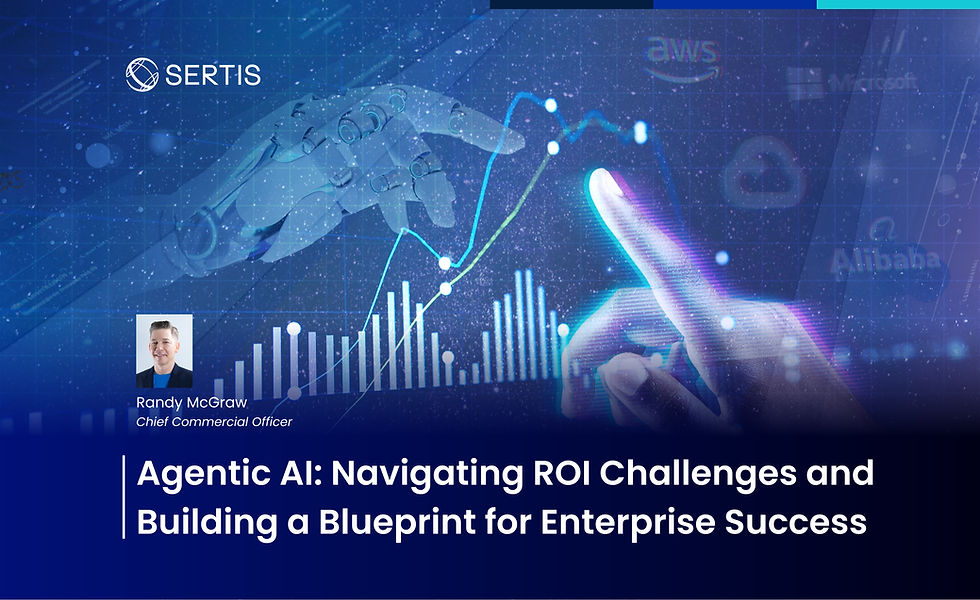The MLOps Maturity Journey: Bridging the Gap Between Data Science and Production
- Eyal Maoz

- Sep 5
- 3 min read

From Pilots to Production
Across industries, many organizations have made impressive strides in adopting data science and AI. Teams have built promising proof-of-concepts (POCs) and delivered successful pilots. Yet, when it comes to moving these solutions into production at scale, many initiatives stall.
The issue is rarely the lack of innovation or technical talent. The true challenge lies in operationalizing AI. This means embedding it into enterprise systems in a way that is reliable, governed, and sustainable. This is where the concept of MLOps maturity becomes essential.
The Gap Between Data Science and Production
Data science thrives in environments crafted for exploration and experimentation. In contrast, production systems demand reliability, auditability, monitoring, and seamless integration with existing processes. Bridging this gap is complex.
Models that perform well in pilot phases can fail under real-world conditions at scale.
Without robust version control and reproducibility, retraining and audits become difficult.
Manual deployment processes introduce delays and operational risk.
A recent MIT Media Lab report from the NANDA initiative highlights this disconnect. It shows that 95% of generative AI pilot programs fail to deliver measurable business impact, not due to poor model performance, but because they do not integrate effectively into enterprise workflows.

The MLOps Maturity Journey
MLOps maturity is not a one-time milestone but a progressive journey. In practice, we see organizations advancing through four key stages:
Initial (Ad-hoc Pilots): Experiments succeed in isolation but lack structure for deployment.
Repeatable (Basic Pipelines): Teams introduce standardized workflows and pipelines for training and deployment.
Reliable (Automated Monitoring): Monitoring, alerting, and retraining processes are in place, reducing manual effort and risk.
Scalable (Enterprise Integration): AI is fully embedded in enterprise operations, governed by policies, and scaled across business units.
Progression along this journey reduces friction between data science and production, while building confidence in the consistency and business value of AI.
Lessons from the Field
At Sertis, we see this journey unfolding across a wide spectrum of industries. Whether in highly regulated environments, fast-moving consumer markets, or emerging digital sectors, the pattern is consistent. Success depends less on the sophistication of a single model and more on how effectively organizations operationalize it through governance, collaboration, and alignment across teams.
In our experience, organizations that successfully transition from pilots to production share a common foundation: strong version control, automated pipelines, continuous monitoring, and feedback loops aligned with business KPIs. These operational building blocks often matter as much as, if not more than, model accuracy itself.

Bridging the Gap: A Leadership Perspective
From a leadership perspective, advancing along the MLOps maturity curve is about more than technical execution. It is about managing organizational change. Scaling AI requires governance structures, cultural alignment, and clear accountability across business and technology teams.
Practical steps include:
Embedding DevOps principles into data science workflows.
Establishing clear ownership and accountability between business, data, and engineering teams.
Linking model performance metrics directly to business outcomes.
Building repeatable frameworks that can scale across multiple use cases.
The Road Ahead
AI adoption is no longer defined by what happens in the lab. It will be defined by the ability of organizations to operationalize AI responsibly, reliably, and at scale.
The MLOps maturity journey is the bridge between experimentation and enterprise value. For leaders, the imperative is clear: invest not only in building models, but in the governance, infrastructure, and collaboration that will carry them into production.
At Sertis, this is the role we take seriously. We work alongside our clients to ensure that their AI investments translate into sustainable impact — bridging the gap between promising pilots and production-ready systems that create real business value.


